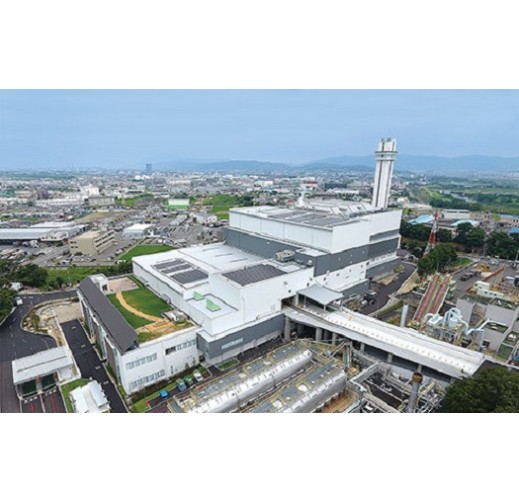Waste to Energy
Technology / Service Summary
The Waste-to-Energy plant burns waste and reduce the volume to about one-tenth without causing air pollution. The plant also supplies green energy and contributes to mitigation of climate change.
Purpose
Our technology is not only solving Waste treatment issues, Environmental impacts, Land use burden but also providing Green Renewable Energy as well as mitigating GHG emissions.
<Short description of WTE system>
Waste brought to the waste pit by waste trucks is burned while moving on top of a combustion device called a stoker/grate in an incinerator. The incinerated waste is then discharged as ash. The energy of exhaust gas generated by combustion is recovered as steam by the boiler, and electricity is then produced by the steam turbine generator. The generated electricity is also sent outside to the grid.
Feature
TECHNOLOGY
- Proven technology by over 1,300 references in the world, in which more than 800 references in Asia, 450 references in Europe, 90 references in America.
- Good adaptability of various wastes and fluctuation of waste quality: pre-treatment is not required
- Adaptation & suitable for the mixing waste source with high moisture content and low calorific value
- Auxiliary fuel is not required (only requested for startup & shutdown period)
- Huge mass treatment possibility: large amount in short time
- Stable combustion and effective power recovery
- High volume reduction of waste: 70-85% weight and 90-95% volume of initial waste
OPERATION
- Stable operation: simple operation and maintenance (O&M) and long-term durability (approx. 8000 hrs/yr * 20-25 yrs)
- Remote monitoring and operational support services by Hitz Advanced Information Technology Center "A.I/TEC"
・Real-time support with 24-hour monitoring to predict malfunctions
・Remote monitoring and data analysis to ensure stable plant operations
・Enhances power generation efficiency by visualization and analyzing data using artificial intelligence (AI) to control operations
Effect
ENVIRONMENTAL IMPACT
- Flue gas: treated to meet strict international standards
- Ash: Safely disposal or recycling
- Wastewater: treated for reuse or discharge (meeting the requirements required)
- Pollution and smell: be completely minimized and controlled
- Direct / indirect greenhouse gas emissions: mitigated
ENERGY
- Green & clean energy (electricity) is generated during treating waste.
- High energy efficiency recovery
LAND USE
- Requiring very small land area for the WTE plant.
- Possible to re-build the new WTE plant or change the purpose of land use after completing the project
- Location: can be installed in urban areas next to residential areas.
- Less land-use burden for landfill: it can extend the landfill life-time.
SOCIO-ECONOMIC
- Improving the quality of life and living environment
- Attracting investment and economic development
Controlled Substance
Reference
Applicable Regions / Countries
- Japan
- Southeast Asia
- Central/South Asia
- China/ East Asia
- Middle East
- Africa
- Oceania
- Europe
- Central/South America
- ASEAN countries
Indonesia,Cambodia,Singapore,Thailand,Philippines,Brunei Darussalam,Viet Nam,Malaysia,Myanmar,Lao PDR
Accomplishments
Waste-to-Energy (WTE) systems are our main business field. Our WTE technology has a long history of development and proven, We have had over 60-year experience in engineering and manufacturing WTE plants. As of September 2022, Hitz has built or supplied 1,360 WTE plants located at almost continents (America: 90 plants, Europe: 456 plants, Asia: 812 plants, and others: 12 plants).
Together with Hitachi Zosen Inova AG (Switzerland) and global potential partners, Hitachi Zosen Group is building Waste-to-Energy plants all over the World.
Largest share of global market in terms of processing capacity (FY2011 - FY2020)
Built one of the world's largest Energy-from-Waste plants (5,220 tons per day capacity)
Reference URL
Related SDGs Goals
- 3. Good Health and Well-being
- 7. Affordable and Clean Energy



